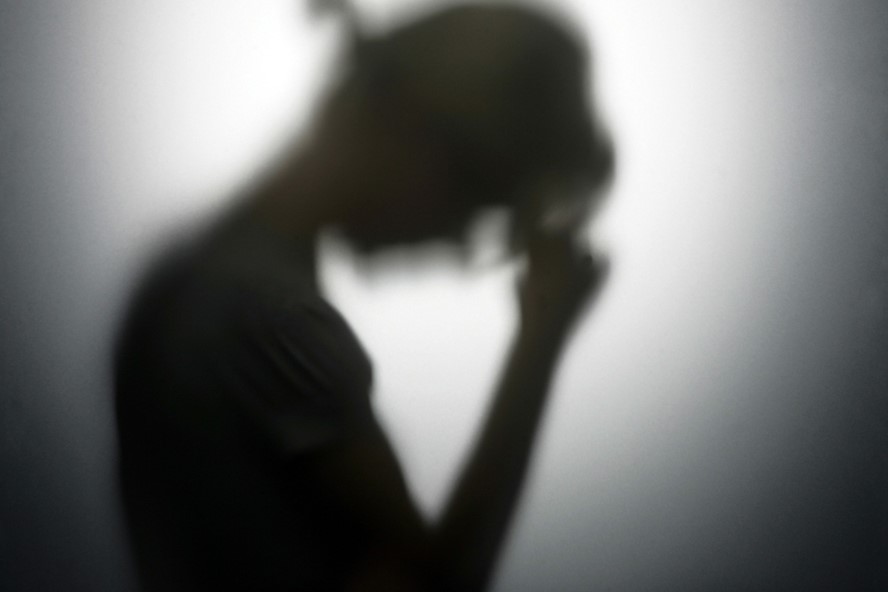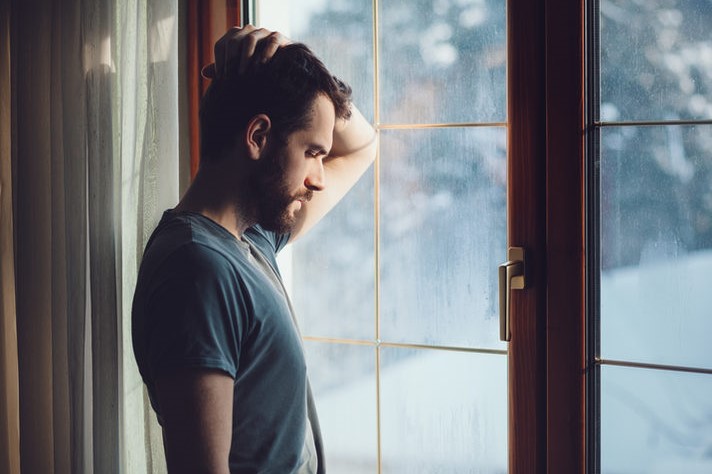
Seasonal Depression Can Happen in Spring: Here’s Why and How to Cope
Seasonal depression, previously known as seasonal affective disorder (SAD), involves symptoms that come and go as the seasons change. The most recent edition of the “Diagnostic and Statistical Manual of Mental Disorders (DSM-5)” officially recognizes this condition as major depressive disorder (MDD) with a seasonal pattern
Most commonly, symptoms of seasonal depression begin in the fall and winter and improve as spring rolls around, but that’s not always the case.
You might instead notice the reverse: mood changes that begin in spring and persist into summer. Some people refer to this type of depression as “reverse SAD,” in fact.
Since experts have linked the winter type of seasonal depression to lack of sunlight, you might wonder what triggers a low, sad mood in the springtime. After all, the days are lengthening, new growth is blossoming, and there’s plenty of sunshine.
As it turns out, the longer days, warmer weather, and all that greenery in bloom may actually have something to do with spring depression.
Below, we’ll explore the key signs and potential causes of spring depression, plus offer some tips to cope with symptoms and find professional support.
Seasonal Depression, how it feels
Spring depression involves many of the same signs and symptoms as major depression, although symptoms won’t necessarily show up in the exact same way for everyone — just as they won’t with MDD.
As the winter days lengthen and spring approaches, you might notice:
- a general low mood, which might include persistent feelings of sadness and hopelessness
- less or no interest in your usual activities
- difficulty finding the motivation for your regular daily routine
- changes in energy, including lethargy or restlessness
- insomnia and other sleep difficulties
- trouble with concentrating or remembering information
- appetite or weight loss
- unusual agitation or irritability
- feelings of anger or aggression
- thoughts of death, dying, or suicide
You might also notice signs of depression brain fog and feel restless and unable to settle to any one activity.
You could simply feel sad, low, and hopeless without any clear understanding of why.
For some people, spring depression can also involve uncharacteristic episodes of aggressive or violent behavior, so you might also notice unusual anger that seems to wash over you without any specific trigger.
Why does seasonal depression occur?
Spring depression is less common than winter depression, and experts don’t know for certain exactly what causes it.
A few potential theories include:
- Increased daylight and warmth
If you don’t handle heat well, warmer days may bring discomfort, especially when they involve more hours of daylight. Extreme brightness and heat could leave you feeling low and unmotivated and factor into increased restlessness and irritability.
The increase in sunlight can also disrupt circadian rhythms and throw off your typical sleep-wake cycle, making it more difficult to get the amount of sleep you need for optimal health and well-being.
To put it another way, bright sunny days can leave your brain on high alert, making it difficult to relax when you need to wind down.
Many people notice changes in their sleep habits as a symptom of depression — but it’s worth keeping in mind that insomnia, a condition where you regularly don’t get enough sleep, can also raise your chancesTrusted Source of developing depression.
- Imbalances in brain chemicals
Your brain produces a number of different neurotransmitters, or chemicals messengers, that help regulate mood, emotions, and other important bodily processes.
But having too much, or too little, of them in your system can disrupt typical function and play a part in the development of mood and mental health symptoms.
Experts believe that winter depression relates, in part, to a drop in serotonin — a chemical that’s typically produced after exposure to natural light. An increase in melatonin, another hormone linked to winter depression, can leave you feeling more tired and lethargic than usual.
It’s been suggested that seasonal depression may follow the reverse pattern:
- The sudden increase in sunlight cues your body to produce less melatonin, so you end up getting less sleep than you need. As noted above, this lack of sleep can contribute to, or worsen, symptoms of depression.
- At the same time, levels of serotonin in your body increase as a natural outcome of longer days and sunnier weather. While too little serotonin is linked to depression, too much could also contributeTrusted Source to mental health concerns, including social anxiety disorder.
If you’re particularly sensitive to these changes, a surplus of serotonin (not to mention the lack of sleep) could potentially contribute to feelings of irritability and restlessness, along with a low mood.
That said, it’s still unclear what actually causes spring depression.
Seasonal depression and pollen sensitivity
Do you have seasonal allergies?
Beyond making you feel congested, groggy, and flat-out miserable, pollen sensitivity might also contribute to changes in your mood, including feelings of depression:
- Research from 2007Trusted Source considered a sample of 845 African and African American students living in Washington, D.C. Researchers noted that African American participants experienced allergies and asthma at higher rates and often had more severe symptoms than African participants. Participants tended to have worse moods on high pollen days — and those who experienced pollen-related changes in mood were more likely to experience spring and summer seasonal depression.
- Research from 2019Trusted Source surveyed 1,306 Old Order Amish adults — a primarily farming population that has a higher exposure to pollen and other seasonal allergens. The results of this study also point to a link between high pollen days and worse mood symptoms among those with symptoms of spring or summer depression.
Other potential risk factors
A few additional factors may raise your chances of experiencing seasonal depression, including:
- Sex. Women tend to experience MDD with a seasonal pattern at higher ratesTrusted Source, but men tend to have more severe symptoms.
- A family history of MDD with a seasonal pattern. Having a close family member, like a parent or sibling, with spring or winter depression can raise your chances of experiencing it yourself.
- A personal history of bipolar disorder. Living with bipolar disorder can increase your sensitivity to circadian rhythm disruptions that happen with seasonal changes. Shifts in your circadian rhythm can also play a partTrusted Source in episodes of mania.
- Changes in your schedule. If you have a job that changes with the seasons and leaves you less (or more) active in the spring and summer months, the resulting lack of structure or added stress can leave you feeling low and contribute to other changes in mood, sleep, and overall emotional health.
- Geographical location. Living in a hotter or more humid climate could play a part in symptoms of spring and summer depression.
Seasonal depression: finding treatment
As with all other types of depression, spring depression may not improve without support from a trained mental health professional.
Coping strategies can help, but they won’t always lead to lasting relief.
Reaching out for professional support is always a good idea when:
- feelings of depression and other seasonal mood changes last for longer than 2 weeks
- symptoms begin to affect your daily life and relationships
- you have thoughts of self-harm or suicide
- you have difficulty regulating intense emotions, like anger, worry, and sadness, on your own
- your symptoms get worse over time
A therapist can offer more guidance with tracking patterns in your symptoms and helping you find the most helpful treatment.
Treatment typically involves therapy, medication, or a combination of the two.
Therapy
Cognitive behavioral therapy (CBT), an approach often used to treat depression, teaches techniques to help you identify and address unwanted thoughts and behavior patterns.
Techniques used in CBT for seasonal depression (CBT-SAD) might include:
- cognitive restructuring, which involves reframing unhelpful thoughts about the season and related mood symptoms
- behavioral activation, which helps you create a routine of enjoyable activities and positive or rewarding habits
Interpersonal therapy, an approach specifically developed to treat depression, helps you explore issues in your personal and professional life and relationships that could contribute to symptoms of depression.
If spring depression relates to a shifting schedule or seasonal changes in your home life, for example, your therapist might help you identify and practice new strategies to address those concerns and any emotions they bring up.
Medication
If you’d like to try treating seasonal depression with medication, a psychiatrist or other prescribing clinician may prescribe antidepressant medication, such as:
- a selective serotonin reuptake inhibitor (SSRI) antidepressant, such as fluoxetine (Prozac), sertraline (Zoloft), or paroxetine (Paxil)
- extended-release bupropion, which you’ll begin taking in early spring and stop taking once summer ends
The bottom line
Spring depression may not last year-round, but it can still have a lingering impact on your overall health, well-being, and quality of life.
While you can’t stop the seasons from changing, you can take steps to head off spring depression by building a toolbox of helpful coping strategies.
Read Also:
Emergency Live Even More…Live: Download The New Free App Of Your Newspaper For IOS And Android
What You Need To Know About Substance Use Disorder
Covid, A Study Of Surviving Patients Confirms: ‘Persistent Depression In The Aftermath Of Illness’



